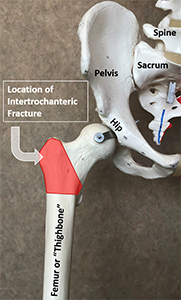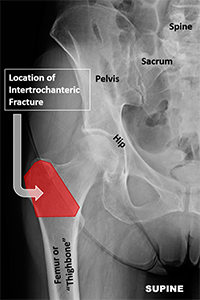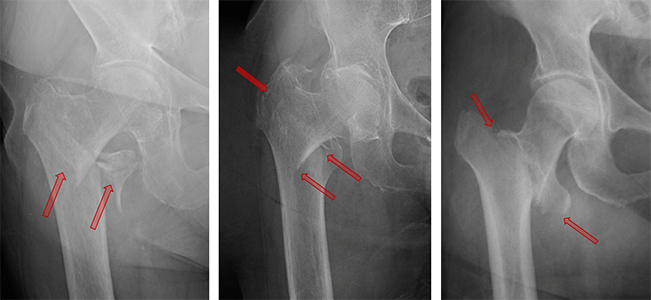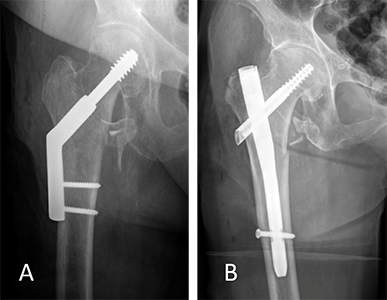Physical Therapy Videos - Hip and Pelvis
What Is It?
An intertrochanteric fracture is a type of broken hip. The hip is made up of two bones: the femur (thigh bone) and the pelvis (socket). The hip is a ball-in-socket joint that helps you move your leg when walking. If a hip breaks between the bumpy parts at the top of the thigh bone, it is called an intertrochanteric fracture.
How It Happens
About half of all broken hips are intertrochanteric fractures. They can happen to young people after a strong impact, like a car crash or fall from a roof. But these breaks are more common in older people because their bones get weaker as they age. Older people usually break their hip by falling while standing. The CDC says over three hundred thousand people are hospitalized for hip fractures each year.
First Steps
A broken hip is painful, and most people can't walk on their leg after breaking it. They usually go to the emergency room in an ambulance. At the hospital, they get an x-ray of their hip to see if it's broken. They also need pain medicine. People with broken hips often need surgery to fix the broken bone. They stay in the hospital, and other doctors check them to make sure they're healthy enough for surgery.
Treatment
The best treatment for these injuries is surgery to fix the broken hip. A metal implant is put in the bone to hold it in place until it heals. The implant is put through a cut in the skin on the outside of the patient's hip.
Recovery
After surgery, patients usually need a walker, crutches, or a wheelchair. While the hip is healing, the doctor will tell you how much weight to put on it. You'll likely need physical therapy. You might need to stay at a care facility until you're strong enough to go home. It's important to sit up during the day to avoid pneumonia, bedsores, or blood clots, and to work on using your leg safely.
Long Term
Sometimes patients limp after surgery, but physical therapy can help. Your hip might feel tired or stiff after surgery. In rare cases, the bone doesn't heal, or there's an infection, and another surgery is needed. Even with successful surgery, you might need a walker or cane. The most important thing is to prevent another fall. A walker or cane can help you stay stable and avoid falling again.
Physical Therapy Videos - Hip and Pelvis
More Information
---
Christopher Doro, MD
Edited by the OTA Patient Education Committee and Justin Haller, MD (section lead)
All x-rays and pictures taken from the personal collection of Dr. Doro




